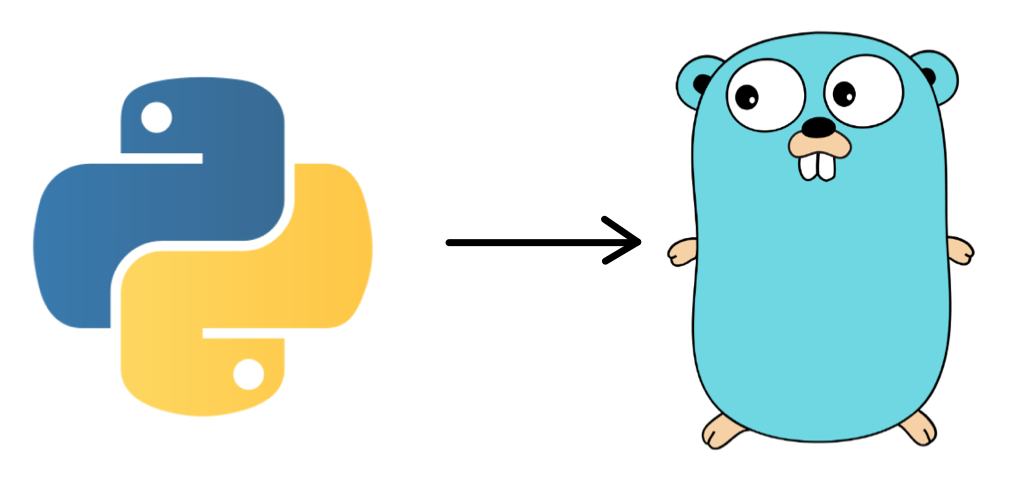
These two languages are popular and widely used languages for backend website development, command line interface tools, cloud development, and many other purposes. They have a large open-source community and are developed by big tech companies. Go Lang was developed by Robert Griesemer, Rob Pike, and Ken Thompson at Google in 2007 and Python was developed in 1991 by Guido Van Rossum.
Throughout this guide, we’ll learn about the different technologies, compare the two languages, explore what makes each language special, and discover their weaknesses, without taking much time, let's get started.
What is Go Lang?
Over the years, the Go programming language has evolved into a fascinating programming language that can be used to perform several operations and has proven itself in different industries in diverse ways, like Web development, cloud development etc.
The Go language, also known as Go Lang, was created in September 2007 by Robert Griesemer, Rob Pike, and Ken Thompson. Starting as a side project, it quickly gained traction among other Google engineers and became a full-time project in mid-2008. Soon after, Ian Taylor and Russ Cox joined in and helped move the project from prototype to production.
Google's Go programming language is a multi-paradigm, statically typed, and compiled programming language. The language was built to combine both the efficiency of C++ and the readability of the Python language.
One of the major selling points of Go Lang is that it has been widely used in the DevOps community in recent years because it offers the clarity and ease of usage that other languages lack, and it has been able to solve most problems faced in the DevOps world.
Google’s development of Go Lang is a significant victory for the Go Lang community. Google released it to simplify complex development processes while also meeting their cloud expectations.
Go language has been used to build and scale many applications by companies like Google, Dropbox, Twitch, SoundCloud, Uber, PayPal, etc.
What is Python?
Python, on the other hand, is one of the most popular high-level and interpreted programming languages developed and released by Guido Van Rossum in 1991. It’s a language designed with a simple syntax for easy readability. Python is a multi-purpose language that allows developers all over the world to build and scale different software applications because it delivers a rapid development cycle and supports both functional and object-oriented programming. It’s mostly used for web Development (server-side), Automation and Scripting, Data Analysis, Machine Learning and Scientific computing, and it has one of the largest open-source community
Having been in existence since the late 1990s, Python has been used to build many significant applications in the world like Netflix, Instagram, Spotify, Uber, Facebook, etc.
Simple “hello world!” program in Go Lang and Python
The following are ways to write a simple “hello world” program in both Go Lang and Python.
Go Lang:
package main
import ("fmt"
)
func main(){
fmt.Println('hello world')
}
Python:
print('hello world!')
What are some key differences between Go Lang and Python?
The following are some of the basic differences between Go Language and Python Language.
Dynamically typed vs. statically typed Language
The Python language is dynamically typed, and the Go language is statically typed. This simply means that Python variables can change type at runtime or execution time.
while Go variables are assigned a type at compile time and cannot change type, i.e. before compilation, variable types must be known
Syntax and Readability
Python is known for its clean and readable syntax, emphasizing code readability and ease of use
Go was designed with simplicity in mind but leans towards a more explicit and rigid syntax.
Concurrency and Parallelism
Go has features like goroutines and channels built in that allow concurrency, making it a good choice for concurrent and parallel programming.
Python is less effective for CPU-bound tasks because of the Global Interpreter Lock (GIL), which limits genuine parallelism. With libraries like asyncio and multiprocessing, it can still manage concurrency.
Error Handling
Go promotes explicit error handling through return values, which may result in more robust programming.
Most developers think that Python's exception-based approach to error handling is more concise, but it can also result in less predictable code behavior.
Large Ecosystem and Community
Python has a large ecosystem of libraries and packages for many different fields, including machine learning, data science, and web development.
While the Go ecosystem is expanding and is particularly strong in areas like networking, microservices, and cloud infrastructure, there may not be as many libraries available for specific domains.
Compilation and Deployment
Go produces a standalone binary during compilation, making it simple to deploy and run programs.
Since Python is often interpreted, the target machine must have a Python interpreter installed.
Performance
The statically typed nature of Go, the use of built binaries, and the effectiveness of its garbage collector all contribute to its generally faster performance.
Although it can be slower for CPU-bound work, Python excels at I/O-bound tasks and is frequently regarded as being more productive for specific kinds of applications.
Built-in Tools
Go includes built-in tooling for formatting, testing, and managing dependencies through tools like gofmt, go test, and go modules.
While Python relies on external tools and libraries for similar functionality (e.g., pytest for testing, pip for package management).
Which of these languages suits your web project?
Choosing the right language for your project depends on the size of the application you want to build, your team's expertise, project requirements, performance needs and personal preference.
Wrapping Up
We have seen the common differences between both languages and know for a fact that the two languages are crucial for web development so choosing one to work with depends on your choice and need. Thanks for taking the time to read this.